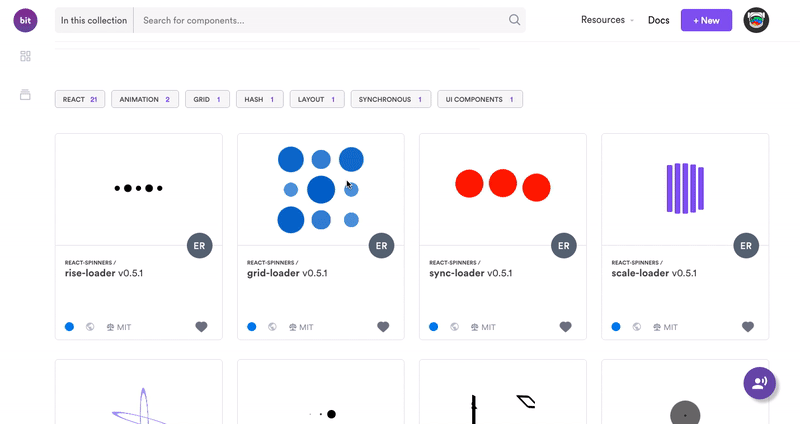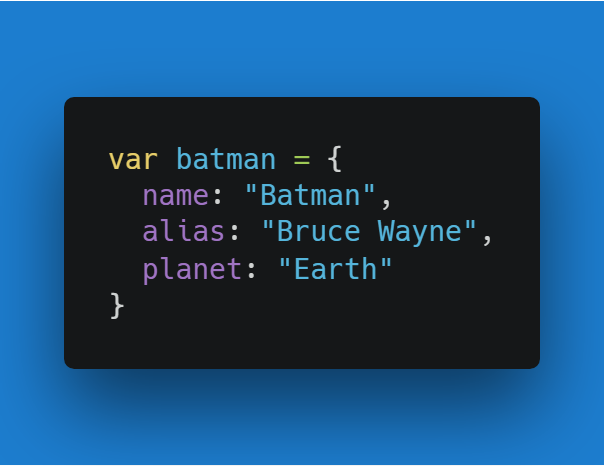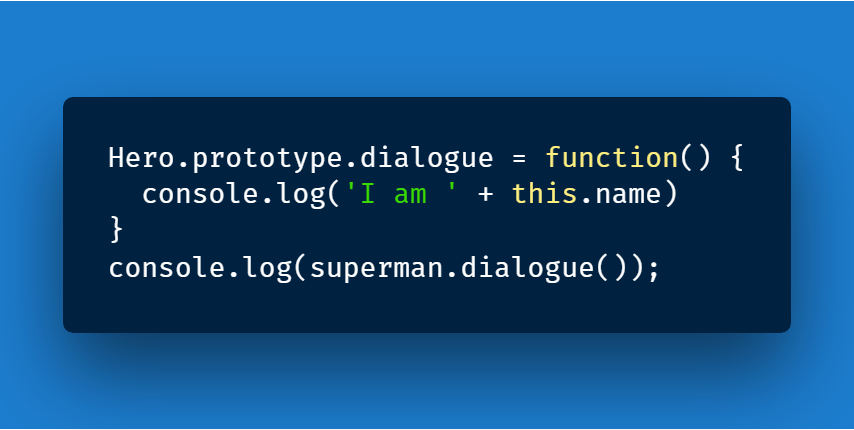You might have heard people say that “In JavaScript, Everything is an Object”.
If you are not familiar with what an object looks like, here is an example:

While this is not entirely true in every case, people still consider the above statement to be true because JavaScript is a prototype-based Object Oriented Programming Language, instead of class-based.
In JavaScript, there are two main types of values:
- Primitives — Strings, Numbers, Booleans, Undefined, and Null.
- Objects — Arrays, Functions, Dates
So, while everything in JavaScript is not an object, the not-object things get wrapped into an object while compilation, allowing JavaScript to do really complicated operations. Even if you think that a value in your code is not an object, chances are that JavaScript has wrapped it inside one.
For example, if we create an empty function named hero:
function hero() {}And like I mentioned before, functions are also classed as objects in JavaScript. So if we add a property type to this function and print it out, you will see that hero function is now also an object.
function hero() {
hero.type = "superman"
console.log(hero)
} // Output { [Function: hero] type: 'superman' }This is one of many things that makes JavaScript so awesome! 🙌
To understand what Prototypal Inheritance is, we first need to understand what an Object Oriented Language is.

Flashback — Object Oriented Programming
In an object oriented programming, objects use methods and properties to interact with one another and create complex applications. This also allows a developer to easily store data in a structured and clean way.
In the example object shown above, we are only storing some data. If I want to create another object for “Batman”, I will have to create a whole new one.

In a real world application, this method can get really tiring and repetitive.
We can see that both these objects are storing the same kind of data: name, alias, and planet. So what if we create a general object that we can then use to create separate instances of that object?
If you are familiar with other programming languages, you would think that I am talking about creating a class. But JavaScript is a Prototype-based language, not Class-based.
In JavaScript, this general object is what is commonly known as a Constructor or a Prototype.
In JavaScript, there is no real difference between a regular function and a constructor function. But in order to help developers differentiate between the two, constructor functions are capitalized.
By creating a prototype, developers can easily create multiple unique instances of the prototype. This is a create way to keep our code clean and concise.
Based on our two objects above, I can now create a Prototype. Lets begin by creating a new function named Hero. Note that here we need to capitalize the first letter of the function name.

Then, I can use the prototype to create the superman and batman objects using the new keyword. This is actually why prototypes are also known as constructors. We are using the prototype function to “construct” a new object.

Inheritance
Inheritance is the process by which one object can be based on another. This lets the objects to share each other’s properties.
I have created the Hero prototype and used it to create a new object named superman. But we are not doing anything with this object. So let’s take care of that by creating another function called dialogue.
function dialogue() {
console.log("I am " + this.name)
}But if we run our code now, nothing is going to happen because this function doesn’t know what the name really is. For that, we need to
I want this new function to have the same properties as that of the Hero. Instead of writing them down inside this function, we can simply tell JavaScript to inherit them from the Hero prototype.
This is possible with the help of the prototype property that is available within any object in JavaScript.

By placing dialogue on Hero.prototype, we have made it available to all instances of Hero.
Differential Inheritance
JavaScript also comes with another inheritance model called “differential inheritance”. In this model, the methods are not copied from the parent to child. But instead there is a link between the children and their parent object.
Here, superman doesn’t actually have its own method called dialogue(). But then how does superman.dialogue() work?
When the JavaScript engine comes across superman.dialogue() in the code, it looks for the property called dialogue inside the superman object. When it doesn’t find one, it will look up the prototype chain to superman’s parent Hero.prototype. There it will find Hero.prototype.dialogue and calls it with a this that is bound to superman.
Object.create()
We can make this even more exclusive by creating a new class for Superman that will inherit the properties of the Hero prototype. We can do this by assigning the prototype of Superman to the Hero prototype like this:
function Superman() {}
Superman.prototype = Hero.prototypeBut what this does is that it just makes both Superman and Hero equal. What we really need is a new object that is based on the Hero prototype. Since ES5, JavaScript comes with a built-in function called Object.create(). Let’s use it here as shown below:
Superman.prototype = Object.create(Hero.prototype)This will create a new empty object that is based on the Hero prototype and assign it to the Superman prototype. So all the properties that we have in the Hero prototype can now be accessed by the Superman prototype. So instead of calling new Hero, we can call new Superman and everything will still work as it should.
But if you take a closer look at the output, you will notice that there is an undefined inside it. That is because currently the Hero is a constructor only for itself. We have to call the properties of Hero inside the Superman prototype.
Hero.call(this, "Superman", "Clark Kent", "Krypton")Let’s create another constructor called MarvelMovies as shown below:
function MarvelMovies(movieName, releaseYear) {
this.movieName = movieName
this.releaseYear = releaseYear
}When a function is used as a constructor, this refers to the new object that we are creating. So in this constructor, I have taken movieName and releaseYear as arguments and assigned those values to the movieName and releaseYear properties of our new MarvelMovies instance named avengers.
var avengers = new MarvelMovies("avengers", 2012)I am then going to create a new method called output for this prototype as shown below:
MarvelMovies.prototype.output = function() {
return "Movie: " + this.movieName + " Released in " + this.releaseYear
}
console.log(avengers.output())Future Inheritance
A really great aspect of inheritance is that JavaScript lets you modify or expand on the features of a class even after you have defined it.
JavaScript will look up the prototype when trying to access properties on an object. So, you can alter classes at runtime!
To illustrate this, lets create an array as shown below:
var numbers = [11, 22, 33, 44, 55]
Array.prototype.shuffle = function() {
return this.sort(function() {
return Math.round(Math.random() * 2) - 1
})
}
console.log(numbers.shuffle())Here, the numbers array existed before the Array.prototype.shuffle did. But in JavaScript, the property lookups go up the prototype chain. This is why the array still gets access to the new method shuffle, since it exists on the Array.prototype when we are actually trying to use it.
In simple terms, we created an array, then went back and gave all Arrays access to a new method.
Conclusion
There are lot of resources out there that explains how prototypal inheritance works in JavaScript. The official documentation of JavaScript states that:
When it comes to inheritance, JavaScript only has one construct: objects. Each object has an internal link to another object called its prototype. That prototype object has a prototype of its own, and so on until an object is reached with null as its prototype. null, by definition, has no prototype, and acts as the final link in this prototype chain.
This definition can get confusing and hard to grasp. This is why some like to shift to the class-based inheritance instead of prototypal inheritance.
There are a lot of other interesting things to discuss around prototypal inheritance, which keep expanding with each newer syntax that comes with ES5, ES6, ES7, and others have to offer.
For example, Object.assign is a great way of improving factories while keeping your code to a minimum. Object.create also has some interesting use cases.